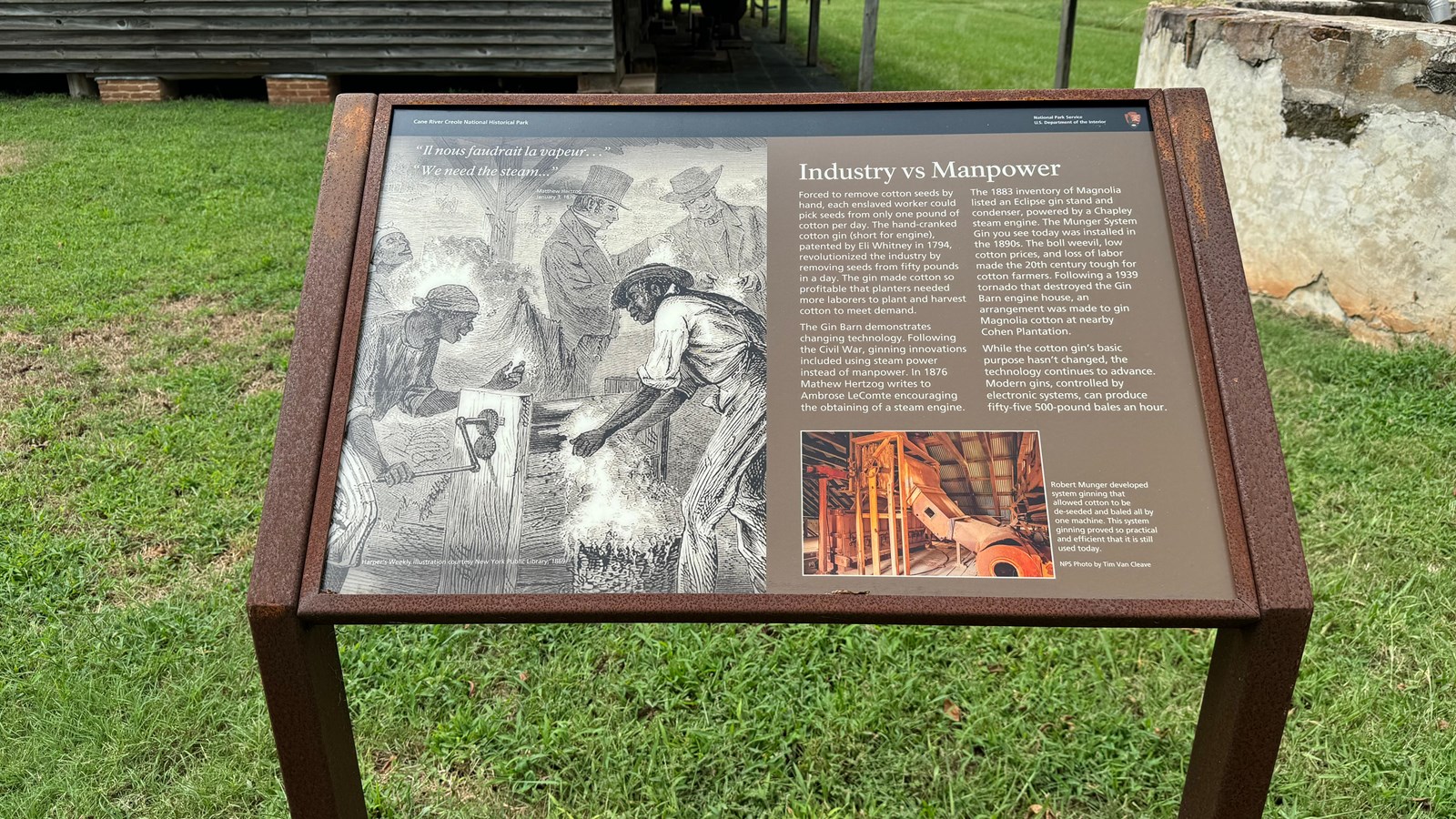Last updated: September 15, 2024
Place
Industry Vs. Manpower

Christy Hoover
Quick Facts
Location:
Natchez, LA
Amenities
1 listed
Historical/Interpretive Information/Exhibits
Forced to remove cotton seeds by hand, each enslaved worker could pick seeds from only one pound of cotton per day. The hand-cranked cotton gin (short for engine), patented by Eli Whitney in 1794, revolutionized the industry by removing seeds from fifty pounds in a day. The gin made cotton so profitable that planters needed more laborers to plant and harvest cotton to meet demand.
The Gin Barn demonstrates changing technology. Following the Civil War, ginning innovations included using steam power instead of manpower. In 1876, Matthew Hertzog writes to Ambrose LeComte encouraging the obtaining of a steam engine.
The 1883 inventory of Magnolia listed an Eclipse gin stand and condenser powered by a Chapley steam engine. The Munger System Gin you see today was installed in the 1890s. The boll weevil, low cotton prices, and loss of labor made the 20th century tough for cotton farmers. Following a 1939 tornado that destroyed the Gin Barn engine house, an arrangement was made to gin Magnolia cotton at nearby Cohen Plantation.
While the cotton gin's basic purpose hasn't changed, the technology continues to advance. Modern gins, controlled by electronic systems, can produce fifty-five 500 pound bales an hour.
Robert Munger developed system ginning that allowed cotton to be de-seeded and baled all by one machine. This system ginning proved so practical and efficient that it is still used today.
"Il nous faudrait la vapeur..."
"We need the steam..."
Matthew Hertzog
January 3, 1876
The Gin Barn demonstrates changing technology. Following the Civil War, ginning innovations included using steam power instead of manpower. In 1876, Matthew Hertzog writes to Ambrose LeComte encouraging the obtaining of a steam engine.
The 1883 inventory of Magnolia listed an Eclipse gin stand and condenser powered by a Chapley steam engine. The Munger System Gin you see today was installed in the 1890s. The boll weevil, low cotton prices, and loss of labor made the 20th century tough for cotton farmers. Following a 1939 tornado that destroyed the Gin Barn engine house, an arrangement was made to gin Magnolia cotton at nearby Cohen Plantation.
While the cotton gin's basic purpose hasn't changed, the technology continues to advance. Modern gins, controlled by electronic systems, can produce fifty-five 500 pound bales an hour.
Robert Munger developed system ginning that allowed cotton to be de-seeded and baled all by one machine. This system ginning proved so practical and efficient that it is still used today.
"Il nous faudrait la vapeur..."
"We need the steam..."
Matthew Hertzog
January 3, 1876
